Special Report
Countries With the Highest Rates of Working Women

Published:
Last Updated:

The inequality between men and women in terms of economic opportunities has always been a problem, but there are signs the gap is closing, albeit slowly, according to the World Economic Forum’s (WEF) 2018 Global Gender Gap Report.
In its annual report, WEF reviewed the percentages of men and women working, economic opportunities, educational attainment, health status, and political empowerment to measure overall gender equality in 149 countries.
When it comes to a country’s share of men and women participating in the labor force, some nations fare better than others. And, many of these are not, as some might expect, in the rich and developed world. Eight of the top 10 countries are in Africa and Southeast Asia.
Still, it’s important to make the distinction that the report is not a ranking of the best places for women to live in. For example, even though Nepal ranks third among countries with the highest share of women working, it does not mean that women there are overall better off than women in the United States, which ranks 56th.
Globally, a higher share of the male population is employed. This is not the case in only three countries — Rwanda, Mozambique, and Burundi. And even there the percentages are very close. Overall, despite the fact that more and more women in general are working, they are almost always underrepresented in government and occupy significantly fewer top positions in business.
The following list is based on the World Economic Forum’s 2018 Global Gender Gap Report, which compares 149 countries and their progress toward gender parity. One of the measures is economic participation and opportunity, which includes labor participation for both working-age (15 and over) men and women. That includes those who are looking for a job, as well as those who are already employed. The share of women in professional and technical jobs, as well as the share of women working in top positions, also came from the report.
Click here to see which countries have higher rates of women working than men.

25. Canada
> Women working or looking for a job: 74.6% (81.8% male)
> Share of women in professional and tech jobs: 57.6%
> Share of women in senior positions: 35.5%
The participation of women in the labor market in Canada has grown consistently since the 1950’s, rising rapidly before slowing down somewhat since 1990. The upward trend has resulted in higher salaries and higher median annual wages for women. Canada leads the way in the gender equality of its government positions, with slightly more than half being held by women.
[in-text-ad]

24. Belarus
> Women working or looking for a job: 74.7% (80.5% male)
> Share of women in professional and tech jobs: 70.8%
> Share of women in senior positions: 47.6%
Belarus, with a population of 9.5 million, scores well in terms of economic participation and opportunity for women. More than 70% of the professional and tech jobs in the landlocked nation are held by women, one of the highest percentages of the 149 countries ranked. Women occupy almost 48% of senior-level jobs in Belarus, a greater percentage than all but eight other countries reviewed by WEF.
Mothers and fathers in Belarus benefit from a generous child-care leave policy of three years, mandated by the government.

23. New Zealand
> Women working or looking for a job: 75.1% (85.0% male)
> Share of women in professional and tech jobs: 55.5%
> Share of women in senior positions: 40.0%
Women in New Zealand earn on average 80% of what men earn, the seventh smallest gender pay gap in the world and the smallest in the East Asia and the Pacific region.
The country rose two spots since 2017 due to improvements in political empowerment of women. The increasing share of women in parliament has put New Zealand among the top 10 countries for overall gender equality for the first time.

22. Barbados
> Women working or looking for a job: 75.2% (80.5% male)
> Share of women in professional and tech jobs: 55.7%
> Share of women in senior positions: 49.1%
The Caribbean nation has achieved virtual gender parity in literacy rates and enrollment in primary, secondary, and tertiary education. Almost 56% of professional and technical workers are female and the share of women in senior positions is approximately 50%.
Women still trail men by over $7,000 in estimated earned income. While women in Barbados occupy small minorities of government and political leadership positions — as is the case in most countries –. the country elected Mia Mottley as its first female prime minister last year.
[in-text-ad-2]

21. Netherlands
> Women working or looking for a job: 75.2% (84.4% male)
> Share of women in professional and tech jobs: 49.3%
> Share of women in senior positions: 26.6%
While the labor force participation rate of women in the Netherlands is among the highest in the world, the country’s gender pay gap remains relatively large at approximately 66%. This could be partly due to many women in the Netherlands choosing to work part-time, which is relatively common according to a report by the country’s Social and Cultural Planning Office. They like to have more time to spend on hobbies and social activities.
On the other hand, the report found Dutch women would also like to work more hours, and some would prefer to transition to full-time jobs.

20. Norway
> Women working or looking for a job: 75.9% (80.0% male)
> Share of women in professional and tech jobs: 52.9%
> Share of women in senior positions: 38.3%
Nordic countries are among the most gender-equal in the world, and Norway is usually at or near the top of that list. The literacy rate is 99% among men and women, and women top men in enrollment in secondary education and far exceed them by 30 percentage points in enrollment in tertiary education.
Norway ranks third in political empowerment out of the 149 countries ranked in the Global Gender Gap Report. Approximately 40% of parliament posts and minister positions are held by women. Gro Harlem Brundtland became Norway’s first female prime minister in 1981, and served as PM two more times.
[in-text-ad]
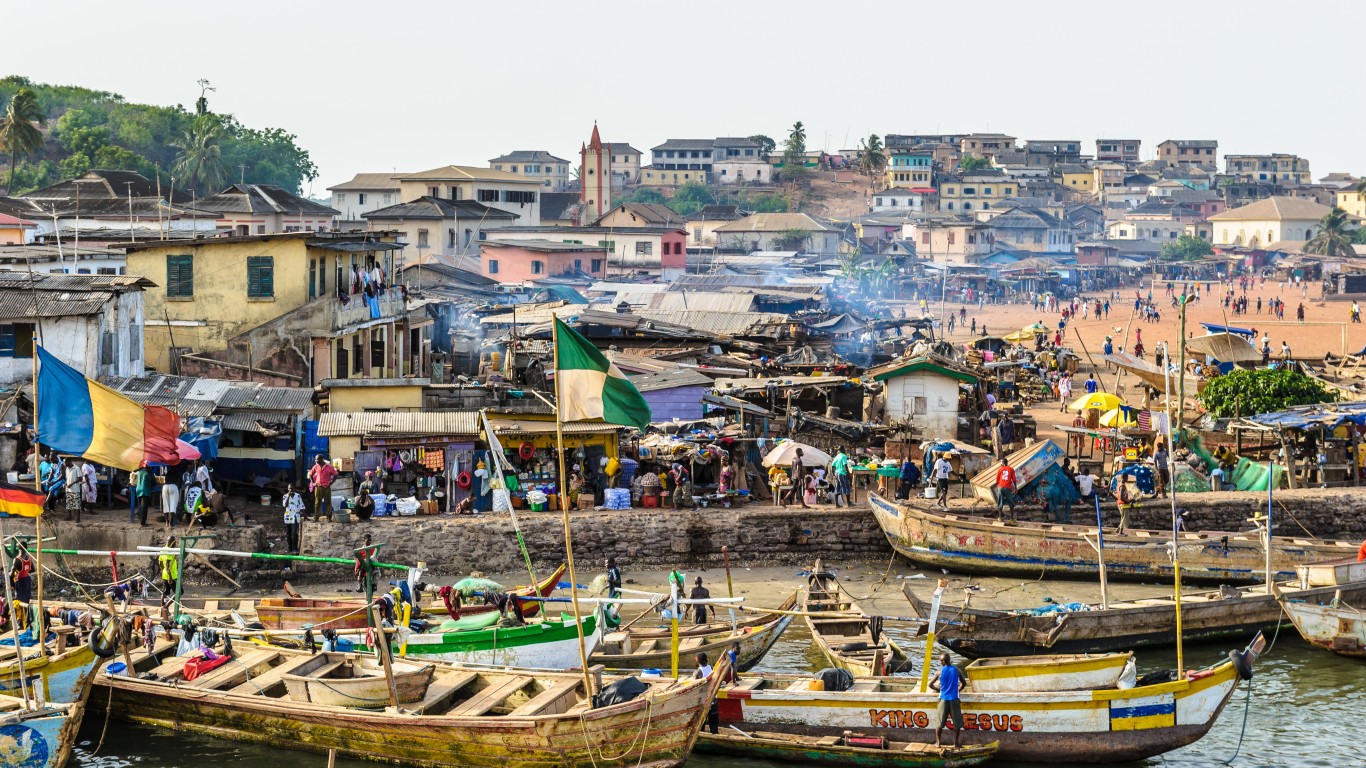
19. Ghana
> Women working or looking for a job: 76.3% (80.0% male)
> Share of women in professional and tech jobs: 41.0%
> Share of women in senior positions: 41.8%
While the male and female labor participation rates in Ghana are nearly the same, women still have far less access to financial services, own less land, and have lower annual incomes compared to men. Further, the country has not made meaningful progress in some areas of gender equality. In 2006, Ghana ranked fifth out of 114 countries in economic participation and opportunity; it was 25th out of 149 countries in 2018.
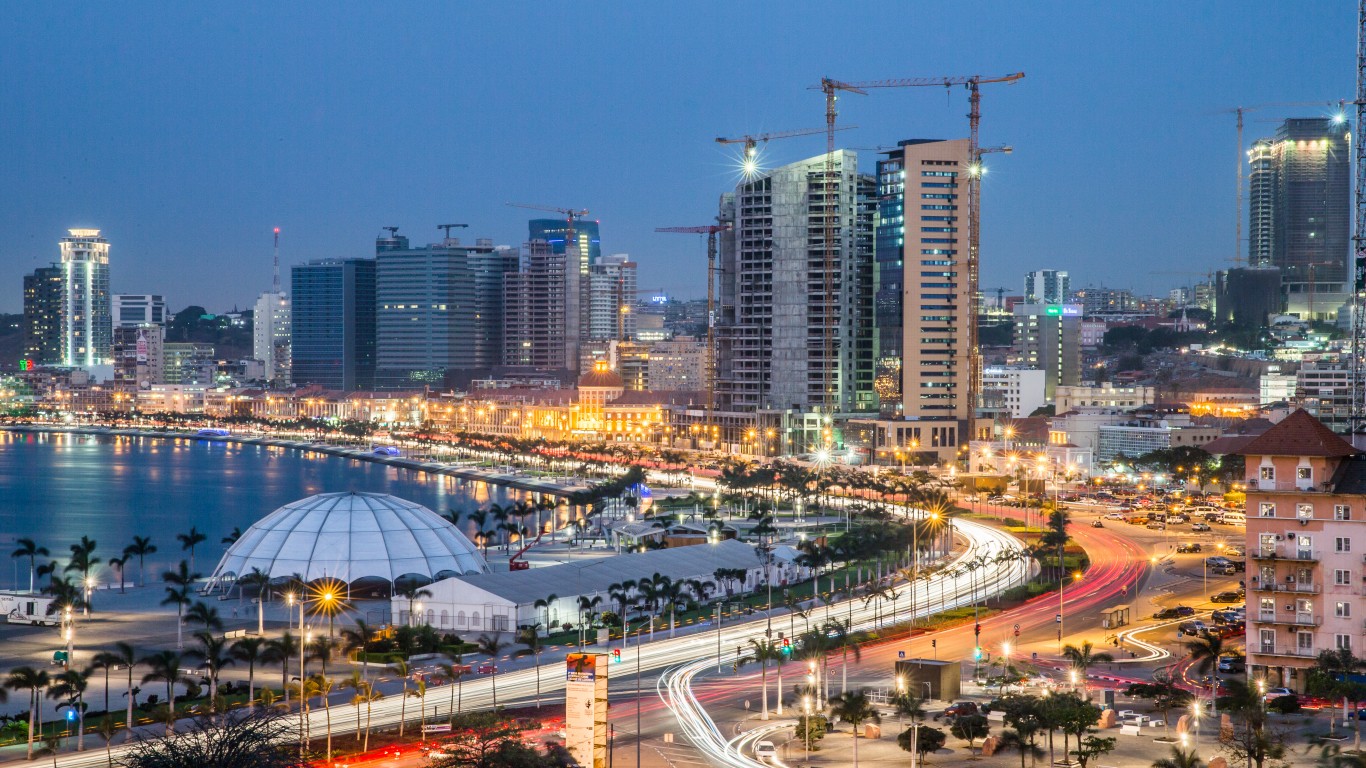
18. Angola
> Women working or looking for a job: 76.3% (80.1% male)
> Share of women in professional and tech jobs: 34.9%
> Share of women in senior positions: 19.5%
Angola is another African country where the male-female labor participation rates are almost equal, with just over 76% of women working or looking for a job. However, women in Angola have a long way to go in terms of educational attainment and political participation. They also trail men in wages for similar work, earning about 65 cents of every dollar men make.

17. Denmark
> Women working or looking for a job: 77.3% (82.5% male)
> Share of women in professional and tech jobs: 51.2%
> Share of women in senior positions: 26.9%
Denmark has made significant progress in closing the gender gap in estimated earned income. Both men and women from exceptionally generous government policies, such as public daycare and parental leave of 224 days, which can be split between the parents any way they see fit.
Unlike in many of even the best countries for gender equality, a majority of professional and technology jobs in Denmark are held by women.
[in-text-ad-2]
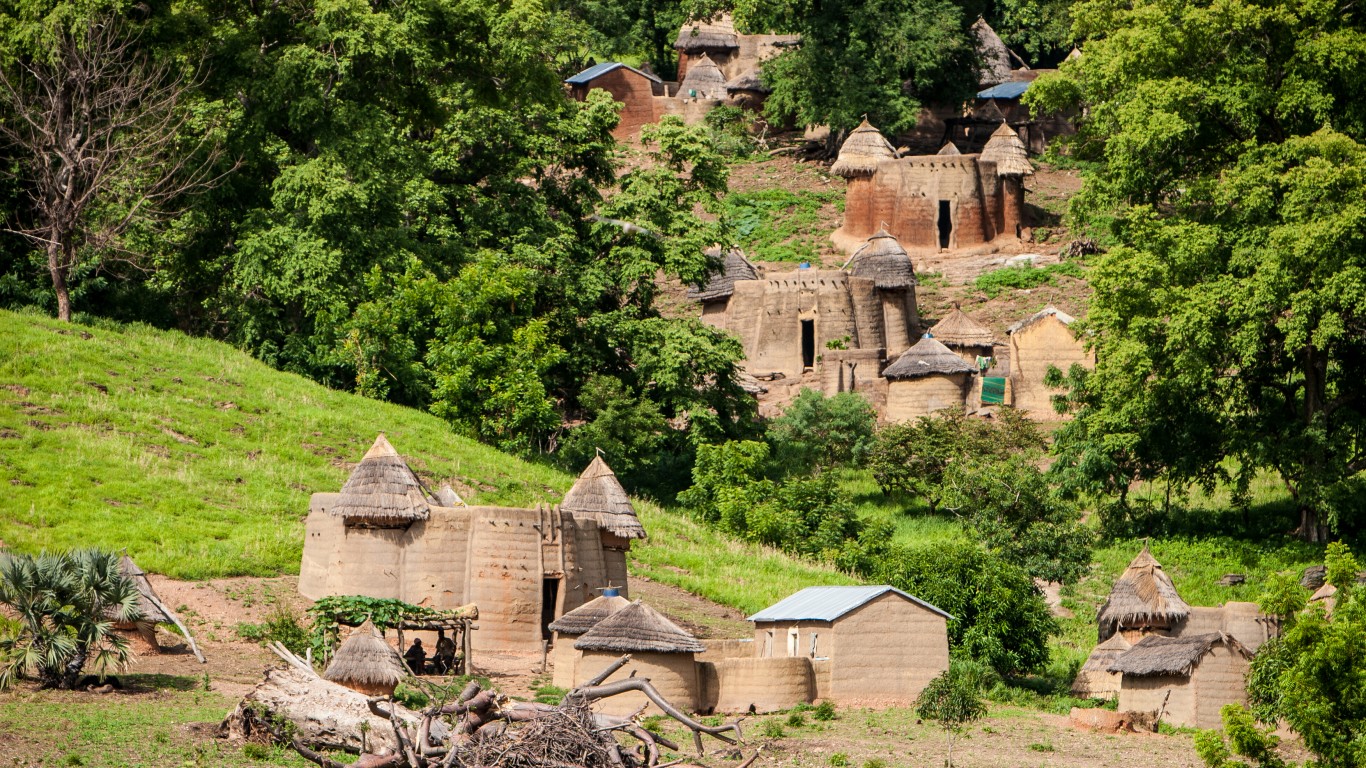
16. Togo
> Women working or looking for a job: 77.5% (80.1% male)
> Share of women in professional and tech jobs: 20.0%
> Share of women in senior positions: 29.8%
The African country of Togo appears on the Global Gender Gap Report index for the first time because of its improved data availability. More than 77% of women in Togo participate in the workforce, less than 3 percentage points below the male rate in the nation of 7.4 million people.
Otherwise, Togo scores on the lower side in various measures of gender equality. Togo is one of the poorer nations in the world, with per capita GDP of just $1,130 a year.
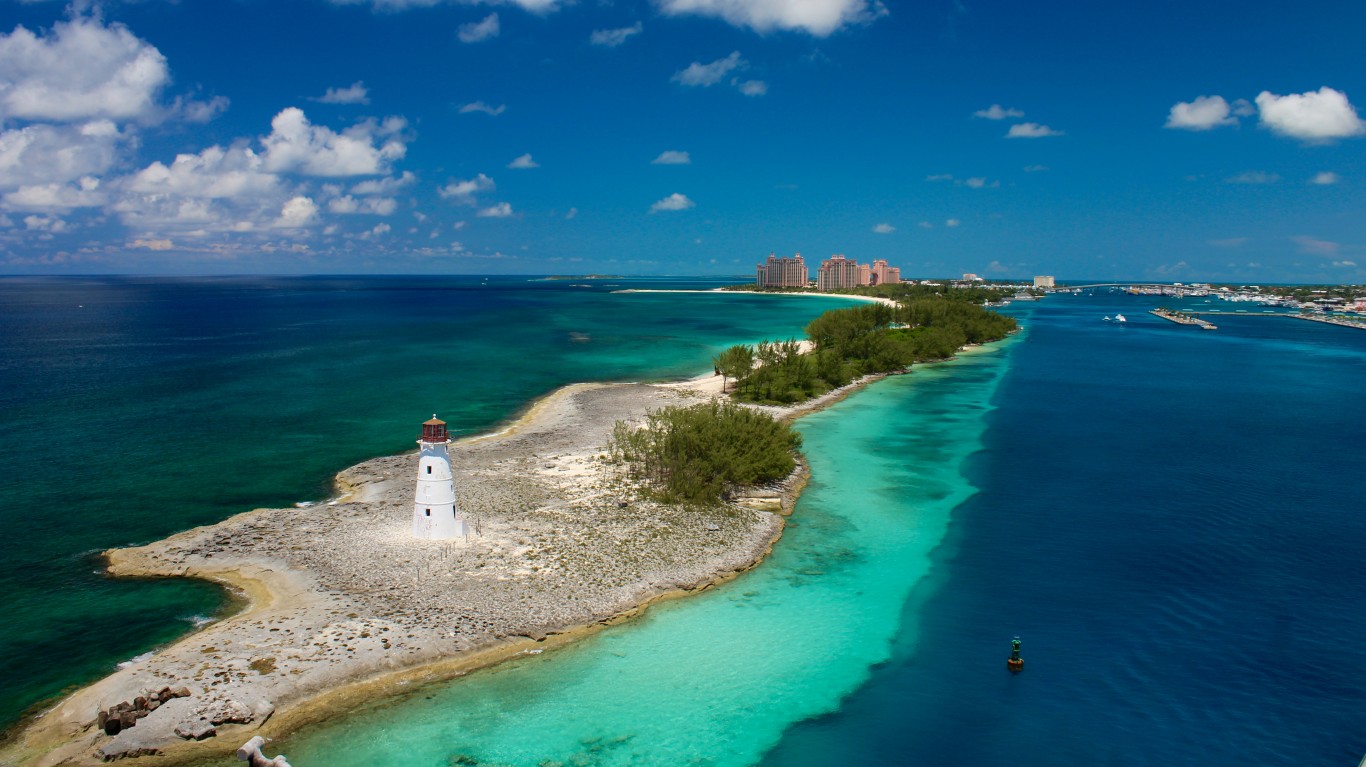
15. Bahamas
> Women working or looking for a job: 77.9% (87.9% male)
> Share of women in professional and tech jobs: 60.3%
> Share of women in senior positions: 51.6%
The Bahamas is among the relatively few countries where women are more educated than men across primary, secondary, and tertiary levels of educational attainment. A majority share of professional and technical jobs in the Bahamas are held by women — 60.3%. And slightly more than half of legislators, senior officials, and managers are women — 51.6% — which is unusual compared to most countries. Women hold just under 13% of parliament seats, however.
[in-text-ad]

14. Vietnam
> Women working or looking for a job: 79.3% (87.1% male)
> Share of women in professional and tech jobs: 54.4%
> Share of women in senior positions: 27.2%
The percentage of women in professional and technical jobs in Vietnam tops that of men at 54.4%, and women exceed men in enrollment in tertiary education at 31.3%, compared with 25.3% for men. In Vietnam, the gender wage gap is among the narrowest in the world, as women earn $6,115 a year, compared with $7,450 for men. Even so, the International Labour Organization said in a report that Vietnamese women continue to work in vulnerable jobs such as migrant domestic workers, homeworkers, street vendors and in the entertainment industry.
Political representation for women in the nation is lacking, as only 4.2% of ministerial positions are occupied by women in the nation of almost 95 million.
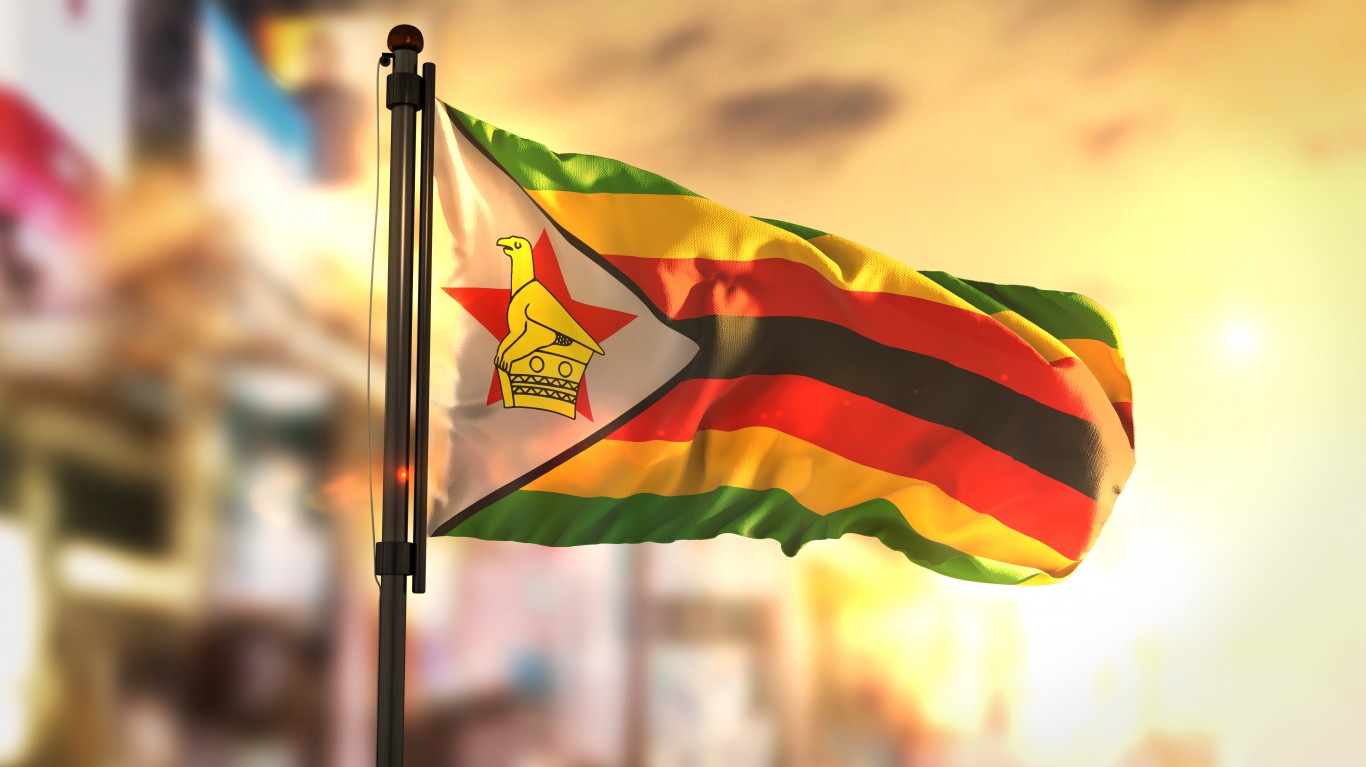
13. Zimbabwe
> Women working or looking for a job: 79.4% (89.9% male)
> Share of women in professional and tech jobs: 45.8%
> Share of women in senior positions: 29.1%
Women in Zimbabwe mostly work jobs in agriculture, health, education, wholesale, and retail trade. Because this kind of work is generally low paying, the estimated annual income of women is lower than that of men — $1,795 compared to $2,393, respectively. Despite an existing law mandating equal pay, women get 64.5 cents for every dollar men make for similar work.
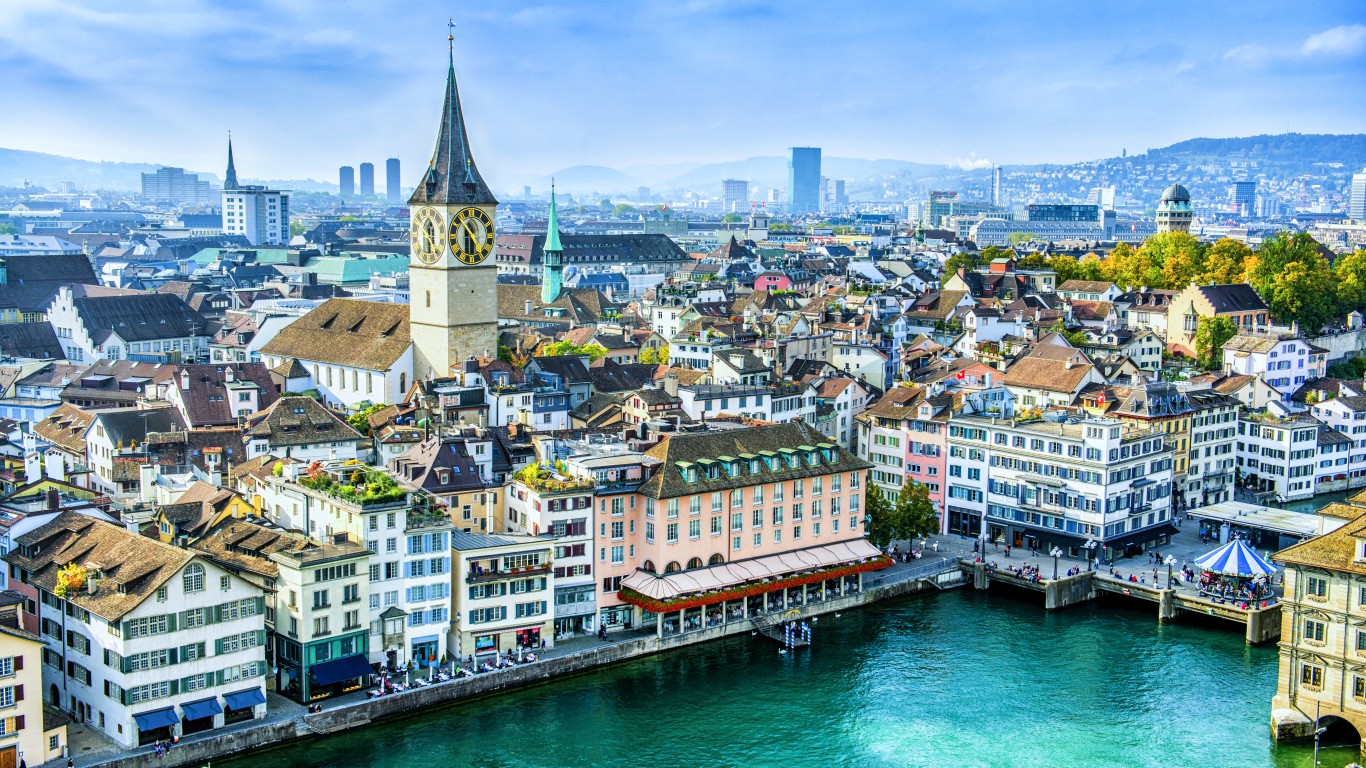
12. Switzerland
> Women working or looking for a job: 79.7% (88.1% male)
> Share of women in professional and tech jobs: 48.1%
> Share of women in senior positions: 33.9%
Switzerland’s literacy rate for men and women is 99% and the landlocked nation of 8.4 million people ranks first in enrollment in tertiary education for women at 58.4%, compared with 57.3% for men. Women still trail men in terms of income, earning $53,362 compared with $76,283 for men.
Doris Leuthard, who most recently served as president of the Swiss Federation in 2017, is among the small but growing group of female heads of government.
[in-text-ad-2]
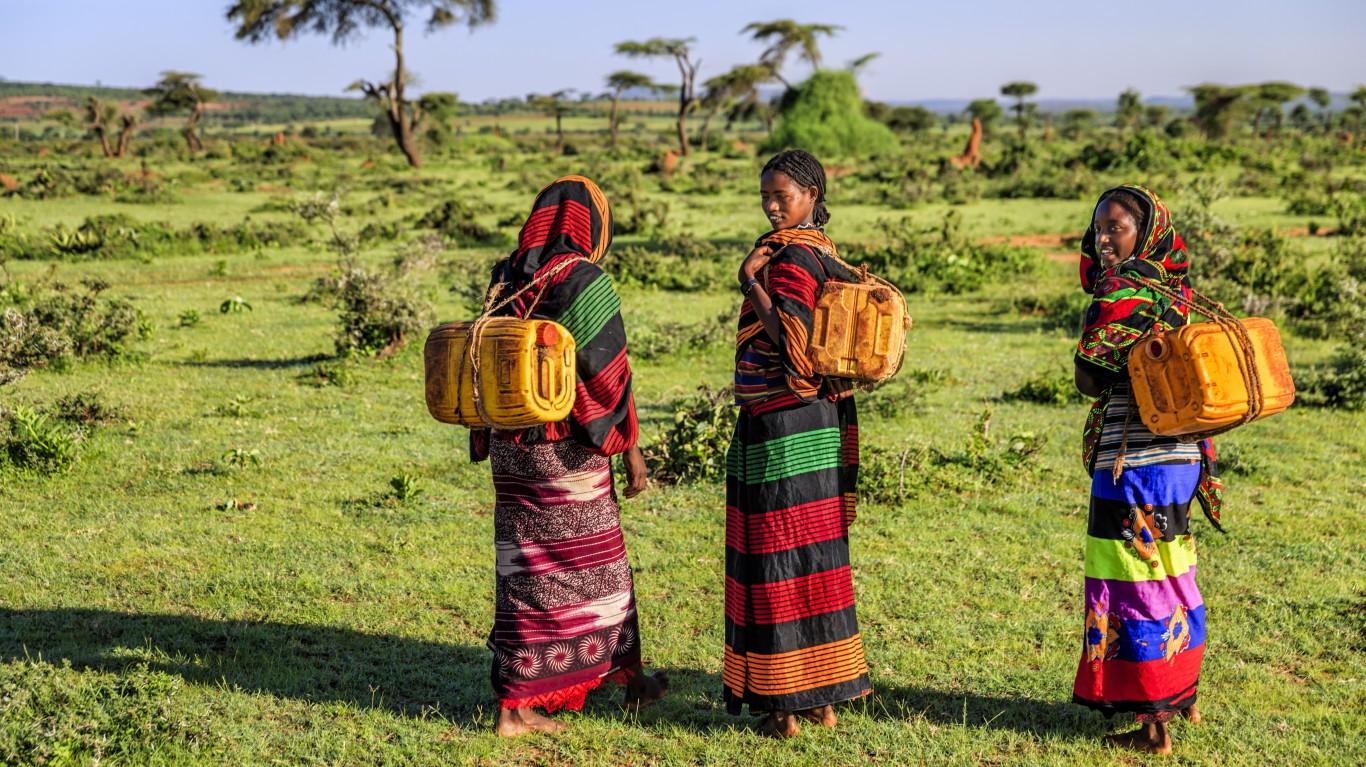
11. Ethiopia
> Women working or looking for a job: 79.8% (89.1% male)
> Share of women in professional and tech jobs: 32.6%
> Share of women in senior positions: 26.5%
Ethiopia is one of the 149 countries in the report where the share of technical and professional jobs held by women is the lowest. They mostly work in the agricultural sector in rural areas.
Countries with high rates of working women are not necessarily the best places for gender equality. In Ethiopia, there are no non-discrimination laws against not hiring women and no laws requiring women to be paid the same as men for similar work.
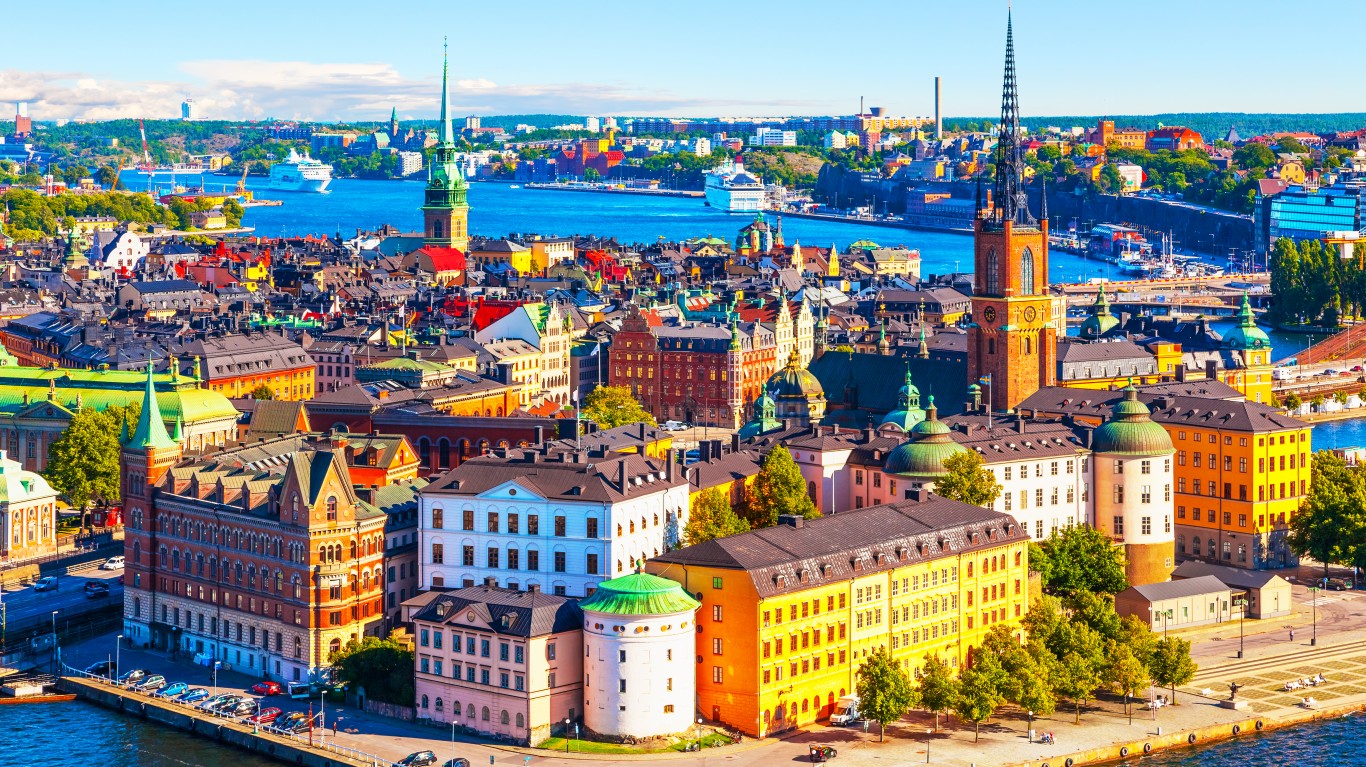
10. Sweden
> Women working or looking for a job: 80.6% (84.3% male)
> Share of women in professional and tech jobs: 51.8%
> Share of women in senior positions: 38.9%
Sweden ranks high in various measures of global gender equality. Literacy and enrollment rates for primary and secondary education are all above 99% for both men and women. The country is also at the top when it comes to enrollment in tertiary education, with 77.5% of women who finished secondary school within five years enrolled compared with 50.3% of men enrolled.
The Scandinavian nation ranks first on the Global Gender Gap Report in its share of women who hold jobs as professional and technical workers at 51.8%. It also ranks first in percentage of women who hold cabinet positions with 52.2%. Women are still paid at least $12,000 a year less than men.
[in-text-ad]

9. Lao People’s Democratic Republic
> Women working or looking for a job: 80.8% (82.1% male)
> Share of women in professional and tech jobs: 50.4%
> Share of women in senior positions: 59.0%
The country ranks at the top in terms of economic participation and opportunity. Almost the same share of women and men are working or looking for work in Laos, a landlocked country sharing borders with China, Myanmar, Vietnam, Cambodia, and Thailand. The country is among a few, out of the 149 in the report, where the estimated annual income for women is higher than that of men — $7,165 compared to $6,880.

8. Tanzania
> Women working or looking for a job: 81.1% (88.3% male)
> Share of women in professional and tech jobs: 43.0%
> Share of women in senior positions: 23.3%
Tanzania, an African country of more than 55 million people, scored high on the Global Gender Gap Report for enrollment in primary and secondary education, with women’s enrollment exceeding male enrollment in both categories. The country ranked 29th for its gender pay gap, with estimated earned income for women of $2,470 a year, compared with $3,432 for men. About 37% of Tanzania’s parliament seat are held by women, placing the nation 24th on the Global Gender Gap Report.

7. Burundi
> Women working or looking for a job: 81.5% (77.9% male)
> Share of women in professional and tech jobs: 46.0%
> Share of women in senior positions: 32.4%
Burundi, a country of about 10 million people in East Africa, is one of a few countries where women actually earn more than men — the estimated annual earned income is $875 for women and $664 for men. Their jobs are mostly in the agricultural sector, which accounts for about 90% of the country’s exports.
[in-text-ad-2]

6. Cambodia
> Women working or looking for a job: 83.4% (89.8% male)
> Share of women in professional and tech jobs: 42.7%
> Share of women in senior positions: 31.8%
More than 83% of women are in the labor force in Cambodia, a country of more than 15 million, less than 6 percentage points below that of the male participation rate. Women earn about $3,390 a year in Cambodia, compared to $4,644 for men, placing the country’s estimated earned income gender gap 20th in the Global Gender Gap Report rankings.
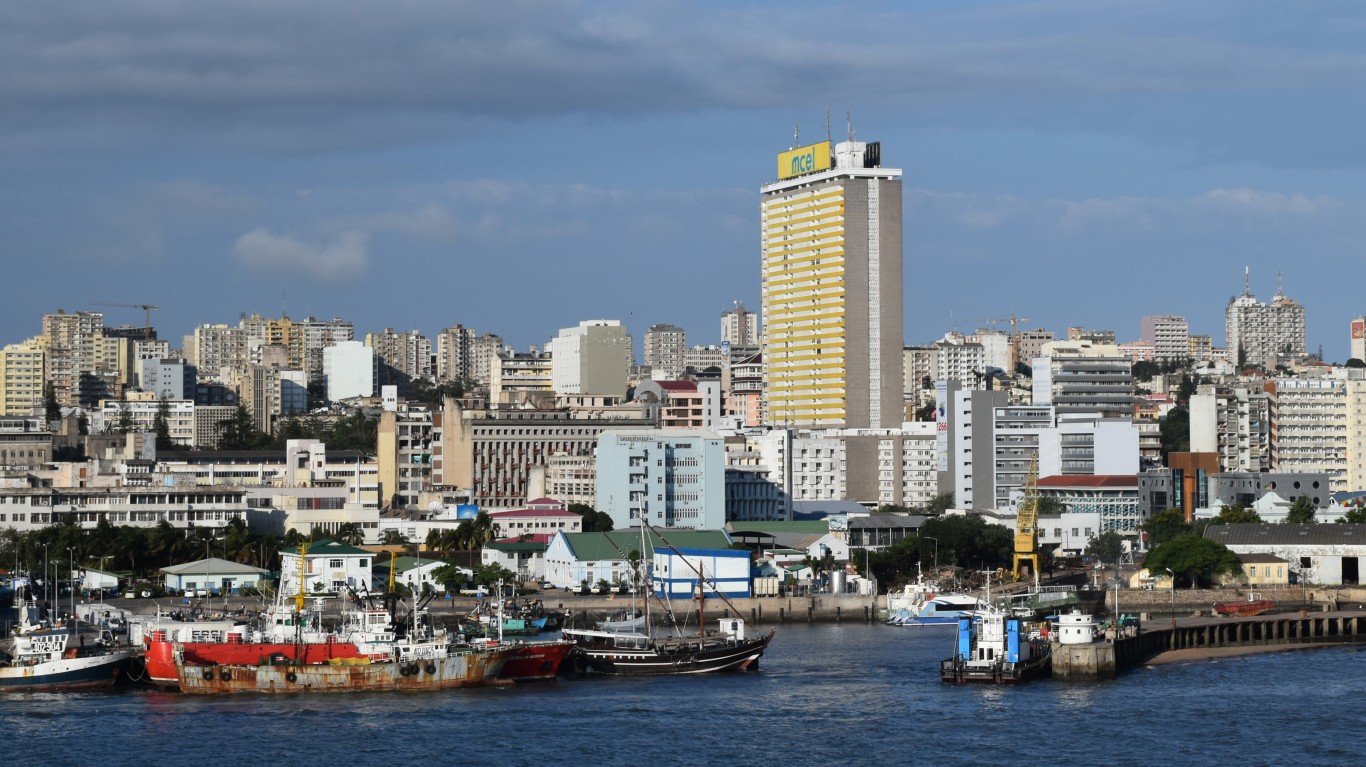
5. Mozambique
> Women working or looking for a job: 83.5% (74.6% male)
> Share of women in professional and tech jobs: 35.0%
> Share of women in senior positions: 24.3%
Mozambique is one of three countries out of the 149 included in the report to have a higher share of the female population working or looking for work. (Rwanda and Burundi are the other two). But women are still paid significantly less for similar work, and occupy significantly fewer tech jobs and cabinet or senior positions.
[in-text-ad]

4. Madagascar
> Women working or looking for a job: 85.1% (90.3% male)
> Share of women in professional and tech jobs: 47.5%
> Share of women in senior positions: 31.8%
In Madagascar, more than 85% of women are in the workforce, the 18th-highest percentage among the countries ranked in the Global Gender Gap Report. Women in Madagascar, a country with almost 25 million people, have a higher rate of enrollment in secondary education, although it is only about 30% of the adult female population who are secondary school age.

3. Nepal
> Women working or looking for a job: 85.4% (87.3% male)
> Share of women in professional and tech jobs: 29.8%
> Share of women in senior positions: 18.8%
One possible reason for the high share of working women in Nepal — a country where widowed women are treated as outcasts and considered bad omens — is many of the country’s men leave to work abroad. Partly as a result, women become more active and enter the workforce. Women are slowly entering into professions that have traditionally been occupied by men only, although this trend is unevenly distributed across caste, ethnicities, and regions.

2. Iceland
> Women working or looking for a job: 86.1% (91.7% male)
> Share of women in professional and tech jobs: 56.0%
> Share of women in senior positions: 32.4%
Iceland, the first nation to elect a woman as head of state, boasts a female labor participation rate of 86.1%, one of the highest in the world. In Iceland, 56% of the professional and technical workforce is female. Women also have higher enrollment rates than men in secondary and in tertiary education.
[in-text-ad-2]
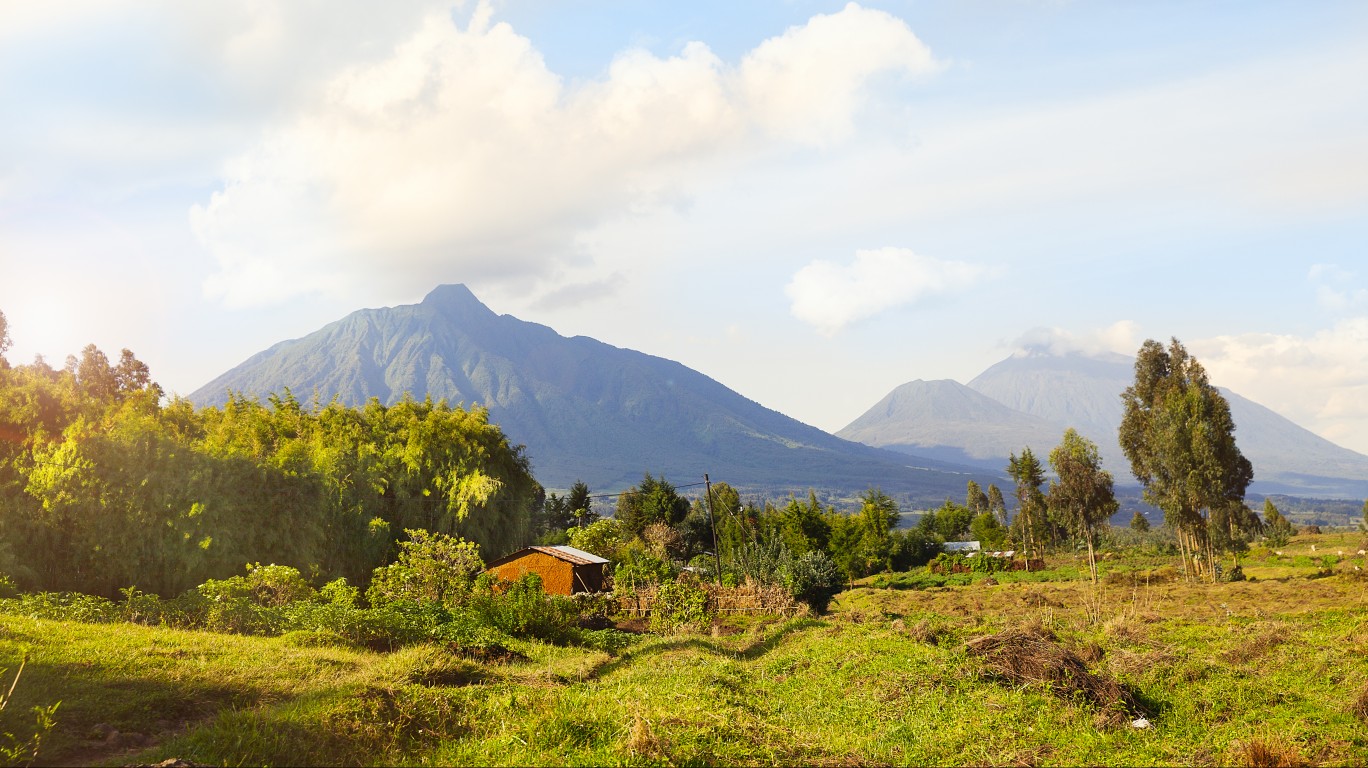
1. Rwanda
> Women working or looking for a job: 88.0% (87.6% male)
> Share of women in professional and tech jobs: 38.7%
> Share of women in senior positions: 36.3%
At first glance, Rwanda is an unlikely champion of gender equality. It is not rich and has a turbulent history. At 88%, Rwanda has the highest rates of female labor force participation in the world. However, this outcome is not entirely by choice. It goes back to the country’s genocide more than two decades ago when close to 800,000 Rwandans were killed in three months. As a result, up to 70% of the country’s population were women, and they had to fill all the jobs.
Credit card companies are handing out rewards and benefits to win the best customers. A good cash back card can be worth thousands of dollars a year in free money, not to mention other perks like travel, insurance, and access to fancy lounges. See our top picks for the best credit cards today. You won’t want to miss some of these offers.
Flywheel Publishing has partnered with CardRatings for our coverage of credit card products. Flywheel Publishing and CardRatings may receive a commission from card issuers.
Thank you for reading! Have some feedback for us?
Contact the 24/7 Wall St. editorial team.